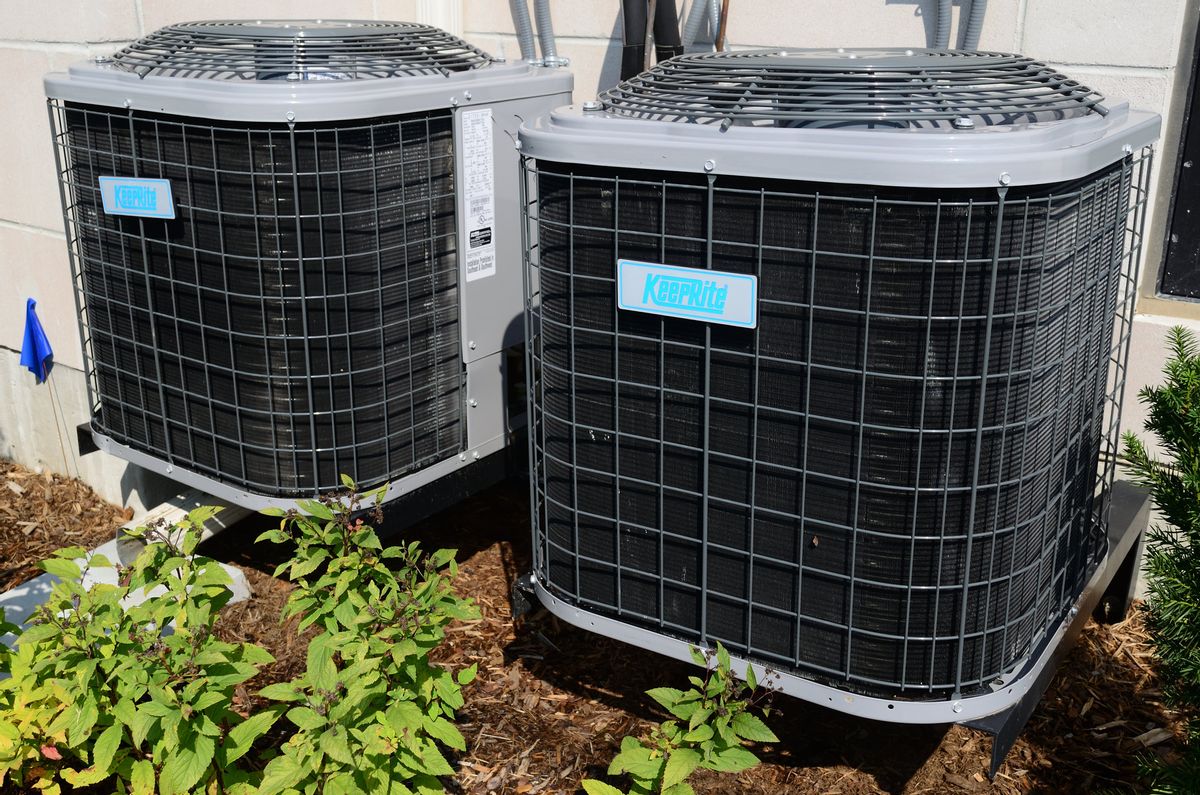A spokesperson for the U.S. Department of Energy told us that this was a "myth." While homes that are shaded by trees may see reduced energy costs, the difference one would see by placing an umbrella over an AC unit is negligible.
Fact Check
In the summer of 2022, as the United States and many other parts of the world experienced excessive heat waves, a "life hack" was circulated on social media claiming that people could lower their energy bills, as well as the temperature in their homes, by placing an umbrella or canopy over their outdoor AC units.
According to the U.S. Department of Energy (DOE), this is a myth. Shading your AC unit with an umbrella or canopy is not going to result in any meaningful changes to your bill.
A spokesperson for DOE told us via email: "This is myth. Shading an AC with an umbrella would have a negligible effect."
When the Direct Energy blog took a look into this issue in 2017, it noted a few logical flaws with the shade solution. But before we get to that, here's a brief explanation of how one of these air condition condenser units work from appliance company Carrier:
The refrigerant gas leaves the home through a copper tube and passes into the compressor in the air conditioner unit outside. Think of the compressor as a large electric pump. The compressor pressurizes the refrigerant gas and sends the refrigerant into the outdoor unit’s condenser coil. A large fan pulls outdoor air through the condenser coil, allowing the air to absorb heating energy from the home and release it outside. During this process, the refrigerant is converted back to a liquid. It then travels through a copper tube back to the indoor unit where it passes through an expansion device, which regulates the flow of refrigerant into the evaporator coil. The cold refrigerant then absorbs more heat from the indoor air and the cycle continues.
The goal of shading an AC unit is to lower the temperature surrounding the condensing coil and the copper tubing as it transfers the refrigerant back and fourth from the house. These parts, however, are already shaded by the unit's casing.
First, there’s an assumption that the sun shining directly onto the unit causes the whole thing to heat up like a brick. Now, shading the condenser might reduce the sun’s heat on the casing but the condenser’s casing doesn’t conduct that much heat to the internal fins and tubing. In fact, all those bits are already under shade inside the case.
There have been several studies done over the years on this issue. In 2010, for example, researchers from the Kuwait Institute for Scientific Research studied the impact shade had on air conditioners and found that shading alone would only result in a maximum of an increased efficiency of 1%. The study concluded:
The actual increase in efficiency due to shading is not expected to exceed a maximum of 1%. Actual daily and seasonal savings in energy will be even lower. The findings of this study suggest that shading alone, without evapo-transpiration, is not an effective measure to improve A/C efficiency or reduce electrical demand.
While temporary structures such as the one shown above won't do much to reduce energy costs, other strategies could help cool off homes. One tip, according to the DOE, is to make sure that AC units are clean and that there isn't anything nearby restricting airflow. Even better, people can plant trees around their homes to provide some natural cooling to their homes and AC units. The DOE spokesperson said:
Trees or other large structures could potentially reduce AC loads if they can reduce the temperature around the AC units, but trees also have the advantage that shading can also reduce the overall AC load for a building too. Cleaning outdoor units or clearing anything that could restrict air flow would actually make a bigger difference.
In addition to providing shade, trees can actually cool down the air via evaporation. Alan Mann, an arborist and consultant for Canopy Tree Experts in Australia, told the Sydney Morning Herald in 2015:
The number one benefit of trees in cities is the cooling that trees produce: the shade under a tree can be up to 10 degrees cooler than the shade under a shade structure. This is because trees transpire. That is, they draw water up through their roots and vaporise it into the atmosphere.
This has a cooling effect on the air.
According to the U.S. Environmental Protection Agency, people can lower their energy costs by using trees and other vegetation to shade their homes. This, in turn, will decrease the demand for air conditioning. The EPA writes:
Trees and vegetation lower surface and air temperatures by providing shade and through evapotranspiration. Shaded surfaces, for example, may be 20–45°F (11–25°C) cooler than the peak temperatures of unshaded materials. Evapotranspiration, alone or in combination with shading, can help reduce peak summer temperatures by 2–9°F (1–5°C).
Trees and vegetation are most useful as a mitigation strategy when planted in strategic locations around buildings or to shade pavement in parking lots and on streets. Researchers have found that planting deciduous trees or vines to the west is typically most effective for cooling a building, especially if they shade windows and part of the building’s roof.
The use of trees and vegetation in the urban environment brings benefits beyond mitigating urban heat islands including reduced energy use: Trees and vegetation that directly shade buildings decrease demand for air conditioning.


